Starting from the great example of Capture Source Filter here I wrote my own input capture device that works fine in Graph Studio Next, but it's not shown as a capture device (i.e. webcam) in application like Skype or similar.
Because I want to understand what's happening I ask you to help me to find out what those application need to show such a device.
Some relevant code:
dll.cpp
DEFINE_GUID(CLSID_VirtualCam, 0x8e14549a, 0xdb61, 0x4309, 0xaf, 0xa1, 0x35, 0x78, 0xe9, 0x27, 0xe9, 0x33);
const AMOVIESETUP_MEDIATYPE AMSMediaTypesVideo =
{
&MEDIATYPE_Video,
&MEDIASUBTYPE_NULL
};
const AMOVIESETUP_PIN AMSPinVCam[] =
{
{
L"Output", // Pin string name
FALSE, // Is it rendered
TRUE, // Is it an output
FALSE, // Can we have none
FALSE, // Can we have many
&CLSID_NULL, // Connects to filter
NULL, // Connects to pin
1, // Number of types
&AMSMediaTypesVideo // Pin Media types
}
};
const AMOVIESETUP_FILTER AMSFilterVCam =
{
&CLSID_VirtualCam, // Filter CLSID
FILTER_NAME, // String name
MERIT_PREFERRED, // Filter merit
1, // Number pins
AMSPinVCam // Pin details
};
CFactoryTemplate g_Templates[] =
{
{
FILTER_NAME,
&CLSID_VirtualCam,
CVCam::CreateInstance,
NULL,
&AMSFilterVCam
},
};
Filter.cpp
CVCam::CVCam(LPUNKNOWN lpunk, HRESULT *phr) : CSource(LPCSTR(FILTER_NAME), lpunk, CLSID_VirtualCam)
{
ASSERT(phr);
CAutoLock cAutoLock(&m_cStateLock);
m_paStreams = (CSourceStream **) new CVCamStream*[1];
m_paStreams[0] = new CVCamStream(phr, this, FILTER_NAME);
}
HRESULT CVCam::QueryInterface(REFIID riid, void **ppv)
{
if (riid == _uuidof(IAMStreamConfig) || riid == _uuidof(IKsPropertySet))
{
HRESULT hr;
hr = m_paStreams[0]->QueryInterface(riid, ppv);
if (hr != S_OK) return hr;
}
else return CSource::QueryInterface(riid, ppv);
return S_OK;
}
CVCamStream::CVCamStream(HRESULT *phr, CVCam *pParent, LPCWSTR pPinName) : CSourceStream(LPCSTR(FILTER_NAME),phr, pParent, pPinName), m_pParent(pParent)
{
hdc = GetDC(NULL);
Gdiplus::GdiplusStartupInput gdiplusStartupInput;
ULONG_PTR gdiplusToken;
GdiplusStartup(&gdiplusToken, &gdiplusStartupInput, NULL);
screen_height = GetSystemMetrics(SM_CYVIRTUALSCREEN);
screen_width = GetSystemMetrics(SM_CXVIRTUALSCREEN);
GetMediaType(8, &m_mt);
}
CVCamStream::~CVCamStream()
{
Gdiplus::GdiplusShutdown(gdiplusToken);
DeleteDC(hdc);
}
HRESULT CVCamStream::QueryInterface(REFIID riid, void **ppv)
{
if(riid == _uuidof(IAMStreamConfig)) *ppv = (IAMStreamConfig*)this;
else if(riid == _uuidof(IKsPropertySet)) *ppv = (IKsPropertySet*)this;
else return CSourceStream::QueryInterface(riid, ppv);
AddRef();
return S_OK;
}
I omitted the other functions that are pretty the same of the example linked and I guess the configuration is made in these ones.
Do you see any evidence of my lack that leads the filter to be not recognized as a video capture device?
Of course the filter is registered (I see it in the DirectShow Filter Manager).
